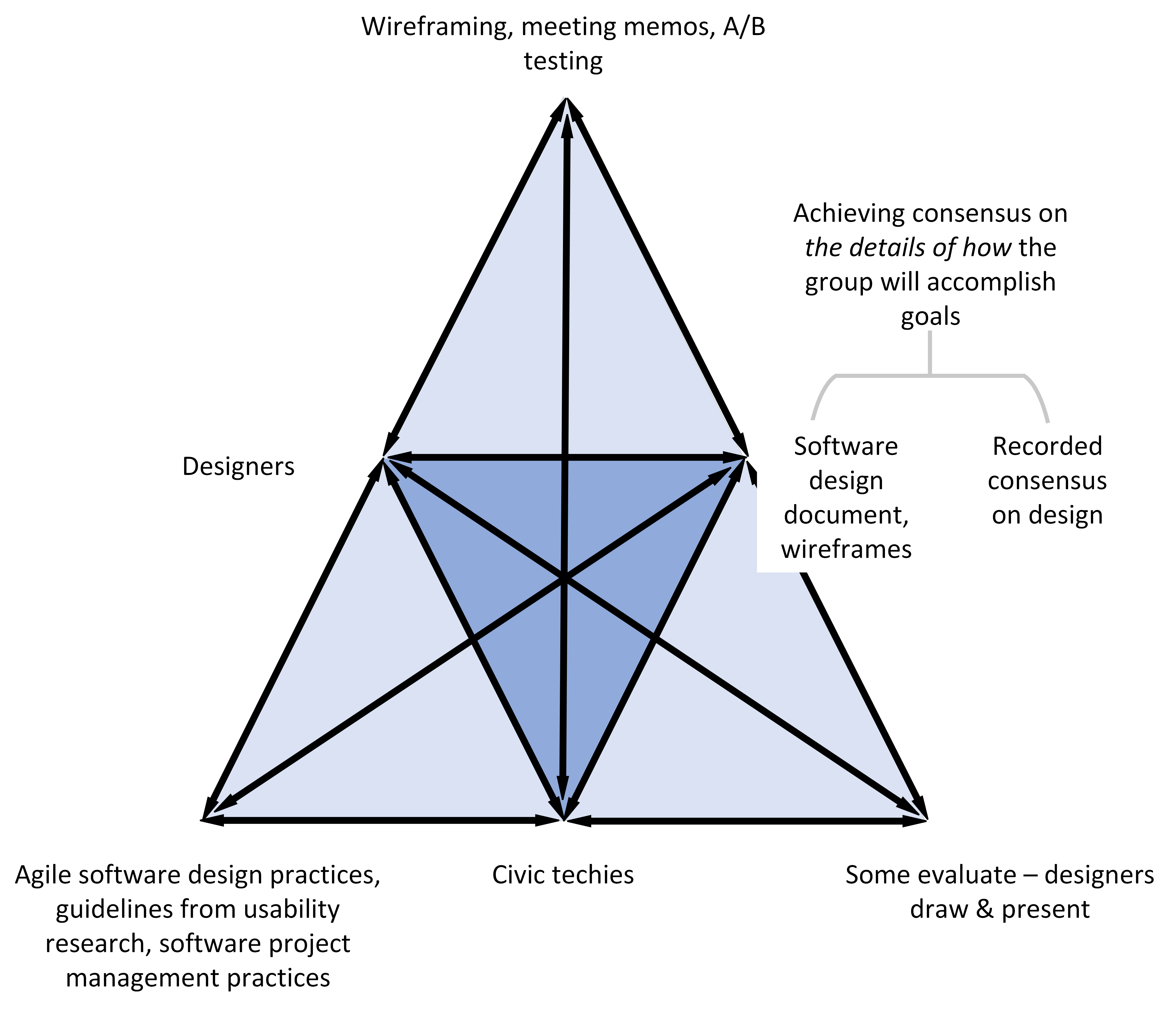Contradicting Motivations in Civic Tech Software Development: Analysis of a Grassroots Project
25 Feb 2023 · 1 min read Figure: Civic tech software design activity system, as modeled with activity theory
Figure: Civic tech software design activity system, as modeled with activity theory
Volunteers can create change in their community or globally, but steering volunteer technology projects can be a challenge. In this case study, we set out to find out which kind of friction might occur during civic tech projects and in which project stages this might occur.
We applied Engeström’s expanded activity theory as a theoretical lens to analyze motivations, how they relate to for example group goals or development tool supported processes, and what contradictions emerge. Participants agreed on big picture motivations, such as learning new skills or improving the community. The main contradictions occurred inside activity systems on details of implementation, instead of big picture motivations. Two most significant contradictions involved planning, and converging on design and technical approaches. These findings demonstrate the value of examining civic tech development processes as evolving activity systems.
Initial Recommendations
Our recommendations for practice are what perhaps professionals in established volunteering and non-government organisations already know: Have skilled and committed facilitators that can keep volunteers pointed in the same direction and sustain participant engagement. Based on our case study, it appears that it is essential to have: efficient communicators, shared task management tools, and a compromise on technologies that most participants can commit to. Finding an acceptable lowest common technology denominator is important, since participant skill levels in civic tech can vary.
Read More
An open access version of the paper is available in arXiv.
Reference
Knutas, A., Siemon, D., Tylosky, N., & Maccani, G. (2023). Contradicting Motivations in Civic Tech Software Development: Analysis of a Grassroots Project. In Proceedings of the 45st International Conference on Software Engineering. (Preprint from arXiv)
Authors
- Antti Knutas
- Dominik Siemon
- Natasha Tylosky
- Giovanni Maccani